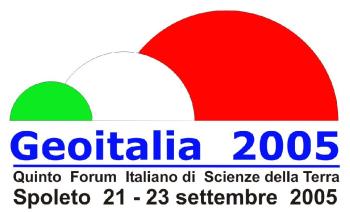Geoitalia 2005
Titolo dell'abstract
Autori
Parole chiave
Abstract
Modalita' di presentazione
Scelta della sessione
CURRENT-SENSITIVE TRACE FOSSILS FROM OUTER SHELF, LOWER CRETACEOUS (ALBIAN), PREBETIC OF ALICANTE, SE SPAIN
Autori
MONACO PAOLO 1, GIANNETTI ALICE 2, CARACUEL JESUS 3, YÉBENES ALFONSO 3
presenter's e-mail: pmonaco@unipg.it
1 - Dipartimento di Scienze della Terra, p.za dell'Università, 06100 Perugia (Italy)
2 - Ernst Reuter Weg 1, 42781 Haan (Me) Deutschland
3 - Dpto. Ciencias de la Tierra y del Medio Ambiente, Fac. Ciencias, Univ. Alicante, Apdo. 99 San Vicente del Raspeig, E-03080 Alicante (Spain)
presenter's e-mail: pmonaco@unipg.it
1 - Dipartimento di Scienze della Terra, p.za dell'Università, 06100 Perugia (Italy)
2 - Ernst Reuter Weg 1, 42781 Haan (Me) Deutschland
3 - Dpto. Ciencias de la Tierra y del Medio Ambiente, Fac. Ciencias, Univ. Alicante, Apdo. 99 San Vicente del Raspeig, E-03080 Alicante (Spain)
Parole chiave
| Tracce fossili |
| correnti di fondo |
| shelf |
| Cretaceo |
| Spagna |
Abstract
The Albian (Sácaras Formation) of the Serra Gelada (Prebetic of Alicante, SE Spain) is composed by carbonate-rich, thickening- and shallowing-upward parasequences, deposited in an outer shelf environment, where many types of current sensitive trace fossils have been identified. Ereipichnus geladensis (Monaco et al. 2005) is a shell-covered, structured trace fossil, up to 4 cm in diameter and 40 cm in length, horizontally developed, forming rectilinear to gently curved tunnels which envelops an unstructured pipe of grey silty sediment. The coating is characterized by the imbrication of flat particles, mainly orbitolinid foraminifers and other planar bioclast fragments, forming thin layers concentrically distributed. Particle arrangement of the external coating is similar to that of terebelloid tubes and the density of jutting tubes reach in some beds 400 specimens/m2. A comparable high density has been recognized for some tube-building marine polychaetes, which are estimated to include more than 500 worms per square metre; this dense population seems to coincide with the presence of strong, unidirectional rip currents in shallow-water environments. Scolicia and Cardioichnus produced by heart urchins (spatangoids) are grain-coated trace fossils, tubular in shape, with a simple internal structure. Coating is often reddish with respect to the neighbouring dark grey sediment and shows a little coarser-grained texture which envelops the internal muddy pipe. Ichnofacies of Serra Gelada locally show other types of branched trace fossils, primarily represented by different forms and measures of Thalassinoides. Bioturbational structure is developed in tiers, upwardly increasing in abundance and diversity reflecting the energy of the environment. For its richness and diversity, the trace fossil assemblages of the Sácaras Fm. represent a highly illustrative example of ethologic response of infauna to changes in water energy (unidirectional currents) related to the sea-level changes at parasequence order.
Modalita' di presentazione
Poster
Scelta della sessione
| 1a OPZIONE | T13 - Depositi sedimentari marini controllati dalle correnti di fondo |
|---|---|
| 2a OPZIONE | T17 - Micro- e meioorganismi come indicatori ambientali e paleoambientali |
